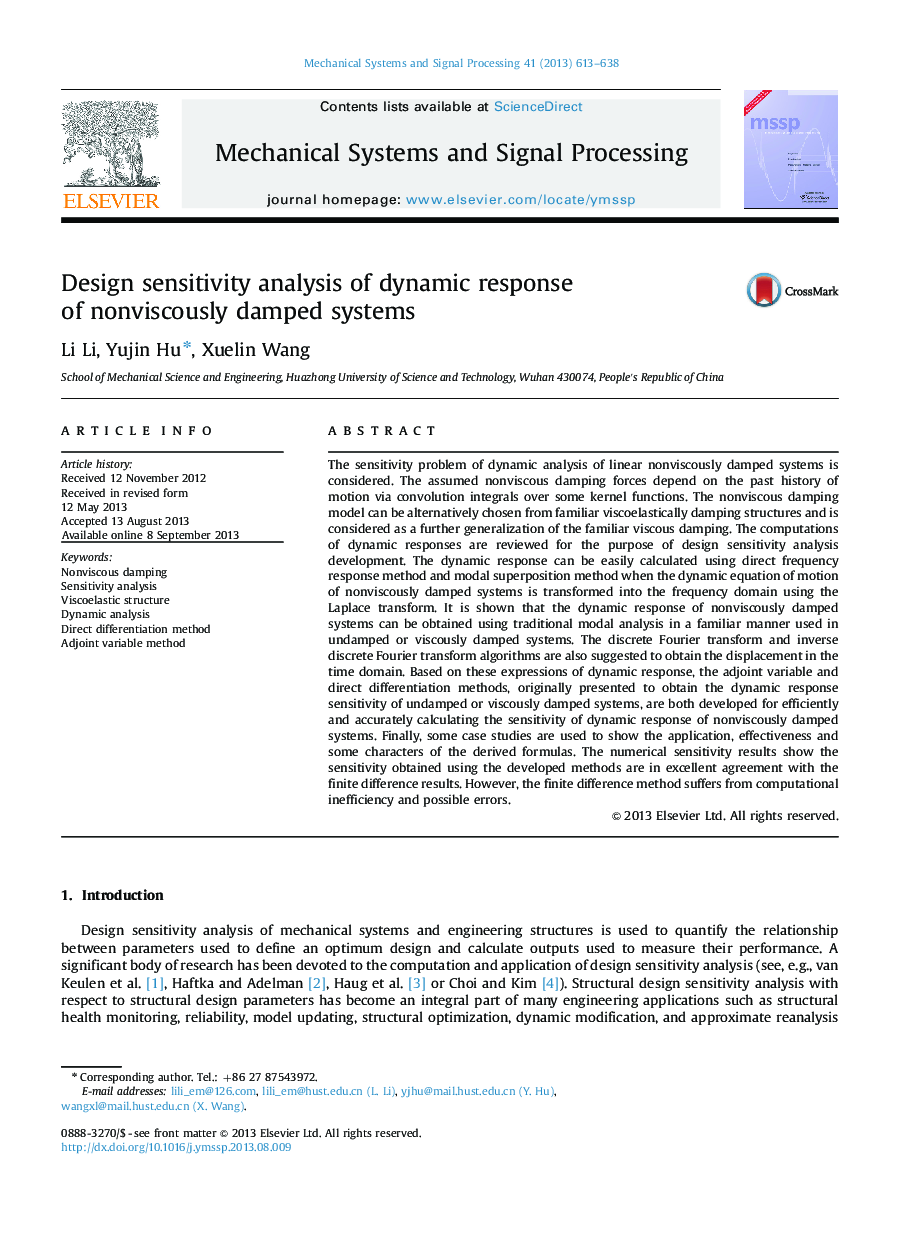| کد مقاله | کد نشریه | سال انتشار | مقاله انگلیسی | نسخه تمام متن |
|---|---|---|---|---|
| 6956690 | 1451876 | 2013 | 26 صفحه PDF | دانلود رایگان |
عنوان انگلیسی مقاله ISI
Design sensitivity analysis of dynamic response of nonviscously damped systems
ترجمه فارسی عنوان
تجزیه و تحلیل حساسیت طراحی پاسخ دینامیکی از سیستم های غرقابی غیر قابل نفوذ
دانلود مقاله + سفارش ترجمه
دانلود مقاله ISI انگلیسی
رایگان برای ایرانیان
کلمات کلیدی
موضوعات مرتبط
مهندسی و علوم پایه
مهندسی کامپیوتر
پردازش سیگنال
چکیده انگلیسی
The sensitivity problem of dynamic analysis of linear nonviscously damped systems is considered. The assumed nonviscous damping forces depend on the past history of motion via convolution integrals over some kernel functions. The nonviscous damping model can be alternatively chosen from familiar viscoelastically damping structures and is considered as a further generalization of the familiar viscous damping. The computations of dynamic responses are reviewed for the purpose of design sensitivity analysis development. The dynamic response can be easily calculated using direct frequency response method and modal superposition method when the dynamic equation of motion of nonviscously damped systems is transformed into the frequency domain using the Laplace transform. It is shown that the dynamic response of nonviscously damped systems can be obtained using traditional modal analysis in a familiar manner used in undamped or viscously damped systems. The discrete Fourier transform and inverse discrete Fourier transform algorithms are also suggested to obtain the displacement in the time domain. Based on these expressions of dynamic response, the adjoint variable and direct differentiation methods, originally presented to obtain the dynamic response sensitivity of undamped or viscously damped systems, are both developed for efficiently and accurately calculating the sensitivity of dynamic response of nonviscously damped systems. Finally, some case studies are used to show the application, effectiveness and some characters of the derived formulas. The numerical sensitivity results show the sensitivity obtained using the developed methods are in excellent agreement with the finite difference results. However, the finite difference method suffers from computational inefficiency and possible errors.
ناشر
Database: Elsevier - ScienceDirect (ساینس دایرکت)
Journal: Mechanical Systems and Signal Processing - Volume 41, Issues 1â2, December 2013, Pages 613-638
Journal: Mechanical Systems and Signal Processing - Volume 41, Issues 1â2, December 2013, Pages 613-638
نویسندگان
Li Li, Yujin Hu, Xuelin Wang,
